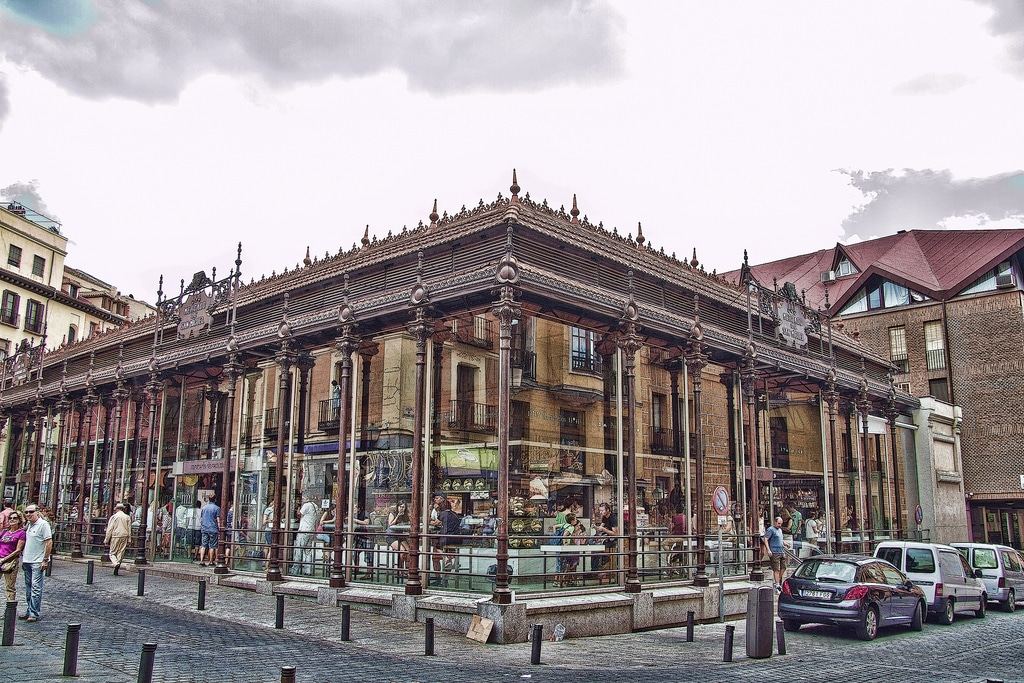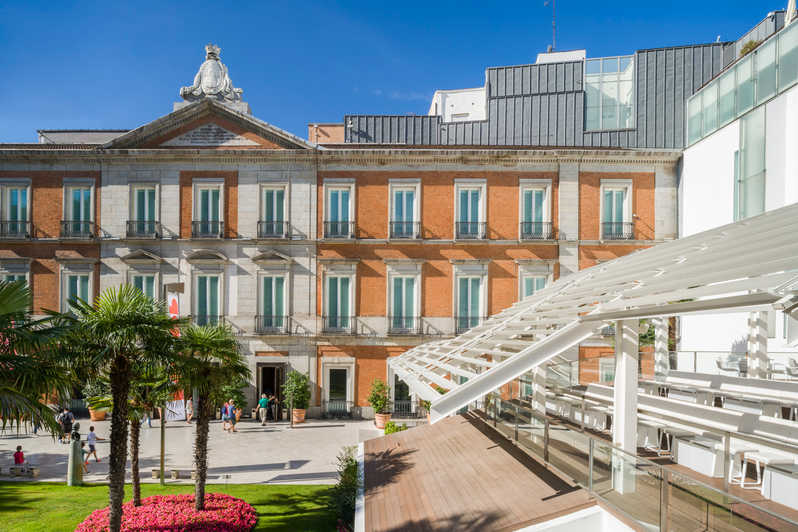Don\’t know what to do in Madrid? Check out 16 must-see tourist attractions and get to know the main tourist spots at Spain’s capital
Madrid is a welcoming city, full of life and lots of partying – so it is a fantastic vacation choice.
There are also other reasons that make Madrid memorable, whether a milk coffee at an imposing square, drinks on a rooftop bar or a walk through the Retiro or the Casa de Campo on a sunny day.
The Prado Museum has works by some of Spain\’s most famous artists, including Velázquez and Goya. The Royal Palace is open to the public and the El Rastro flea market or Salamanca\’s luxury stores offer hours of shopping. But if you\’re drained from a long day of sightseeing, you might want to rest in an open-air café, especially those near Plaza Mayor.
Things to do in Madrid
Gran Vía

If you would like to have an idea of the city, a tour of the Gran Vía is a great place to start. This is the entertainment, shopping and cultural center of Madrid, a street that is full of life until dawn. By day, it is crowded with shoppers at the many malls, street stores like H&M and Zara and luxury boutiques.
At night, there are couples arm in arm, who go to movies or to see a musical. And after dark, the street vibrates with the best nightclubs in town.
Museu do Prado

Absolutely essential, the Prado is one of the best and most popular art museums in the world. There is an overwhelming collection of masterpieces by Renaissance and Baroque masters.
Spain is known for Velázquez and El Greco, the Netherlands for Rembrandt, Brueghel, van Dyck and Rubens, while Titian, Caravaggio, Botticelli and Tintoretto represent Italy. Among the many works you can’t miss are the Garden of Earthly Delights by Bosch and David with the Head of Goliath by Caravaggio.
Royal Palace

Built in mid 1700\’s for King Philip V, the Royal Palace is on the site of Alcázar\’s Moorish fortress in Madrid.
This is the largest royal palace in Western Europe and is a mix of baroque and neoclassical styles.
As well as the impressive architecture, the palace is full of works by Goya, Caravaggio and Velázquez, as well as impressive displays of watches, tapestries, porcelain and silverware. You can see the only Stradivarius quartet of instruments in the world, and the royal arsenal that includes Charles V’s 16th century personal weapons.
Retiro Park

The green heart of Madrid is full of elegant gardens. The Retiro Park is only a few steps away from Prado and was a royal estate until the end of the 19th century when it was opened to the public.
If you are visiting the park with children, paddling in the Grand Pond next to the monument of Alfonso XII is a fun option on a sunny afternoon.
The iron and glass pavilion built to house the Philippine Exhibition in 1887 is another magnificent stop you can’t miss. The oldest tree in the city is nearby: it is a Cypress Montezuma planted in 1633 and surrounded by an iron fence.
Plaza Mayor

Another must-see of Madrid, the Plaza Mayor is a beautiful Renaissance square, built in 1600. There are nine entrances to the square and several cafes inside the porticos at the bottom of the buildings.
Try coffee at an outdoor table and watch Madrid in action for a few minutes. After that you could walk to the 400-year-old bronze statue of King Philip III who was in power at the height of the Spanish empire.
Santiago Bernabéu Stadium

Whether you are a fan or not, the truth is that Real Madrid is the most successful soccer team in Europe, with an 11 European Cups record. Any sports fan should consider a pilgrimage to this gigantic 85,000 seat stadium, where history has been made many times over the seasons.
A tour will give you a panoramic view of the stadium, you will enter the dressing room, visit the knights and see all kinds of interesting pieces, including the trophy collection, the press room and the presidential box.
Archaeological Museum of Spain

With priceless pieces gathered from all over Spain, this museum is a journey through the country’s rich history. What may surprise you is the wealth of magnificent pieces that precede the Roman period.
One of the most popular pieces are the Iberian treasures and sculptures that look almost new, despite being at least 2,500 years old.
San Miguel Market

An easy walk away from Plaza Mayor is this beautiful art nouveau market, dating back to 1916. It is basically a fresh produce market and another gastronomic destination to buy the best that Spain has to offer, like cava and saffron.
There are also a number of tapas bars serving all the city’s favorites, such as patatas bravas, gambas al ajillo and boquerones. The San Miguel Market is considered the largest municipal market in Europe, with 200 stalls.
El Rastro

El Rastro is the biggest flea market in Madrid and it gets very crowded, so it is always a good idea to show up early. Even though it happens on Sundays, the market’s antique shops are always full of people.
Greenhouse Atocha

This green garden opened in 1992. The Greenhouse Atocha fills an abandoned stretch of the building that was once the old Atocha train station before the transportation center grew to include its high-speed train connections.
The expanding garden contains 7,000 plants of over 260 species. In the arboretum section, you will find many native tropical forest plants. Among them are Polynesian coconut trees, royal palms and mahogany trees from Cuba, rubber trees from Brazil, banana trees from the Philippines, palm trees from the critically endangered Indian Ocean islands, and an impressive traveling tree from Madagascar.
Fallen Angel Fountain

In the gardens of the huge Parque del Buen Retiro, this statue is 666 meters above sea level. The Fallen Angel (Ángel Caído) is sitting on a marble pillar in the middle of a fountain, decorated with sinister demonic entities and some reptiles.
Lucifer is shown at the moment he was expelled from heaven, inspired by an excerpt in John Milton\’s Paradise Lost. The sculptor, Ricardo Bellver, made the bronze statue for the third World Fair in Paris, after which the piece was bought by Museo del Prado. The statue was later donated to the city of Madrid and debuted in its current location in 1885.
Madrid Walk of Fame

In 2011, the Spanish Film Academy decided to pay tribute to Spanish actors, actresses and filmmakers by incorporating stars with the names of the most renowned of them. The place they chose was Martin de los Heros, a street with several Arthouse movie theaters.
On June 27, 2011, celebrating the Academy’s 25th anniversary, 25 stars (one for each year) were installed with great names from Spanish cinema history, such as Luis Buñuel, Pedro Almodóvar, Fernando Rey and Antonio Banderas, among others.
Mirador Building

Madrid is full of apartment blocks with impressive architecture, but among them is a truly distinctive construction, rising like a huge postmodern LEGO project.
The building is the Mirador Building (\”Lookout Building\”), a 21-story, 208-foot high structure with a large rectangular opening at about 131 feet above ground. It was designed by MVRDV, a Dutch school of architecture and urban design, and finished in 2005.
Thyssen-Bornemisza Art Museum

If you still have an appetite for art after Prado, go to this museum, which is also part of Madrid\’s \”Golden Art Triangle\”.
The Thyssen-Bornemisza has works from English and German schools of artists like Hans Holbein, Hans Baldung Grien and Albrecht Dürer. These share walls with works by other Renaissance masters, such as Tintoretto, Veronese, Rembrandt, van Dyck and many others. There is also a large collection of American Abstract Expressionism, and a series of impressionist and post-expressionist pieces by figures such as Monet, Renoir and Degas.
Drink beer on a rooftop bar

In the summer, many of Madrid\’s bars and restaurants are spread out on sidewalks and squares. This is an essential part of going out and socializing in the city.
A great option is to choose a bar at a rooftop to observe the wonderful silhouette of Madrid at sunset.
Near the Plaza Mayor is The Hat, a great, well located option, with a stripped down atmosphere.
Watch a Flamenco show

Flamenco is a dance originally from Andalusia and, even though it is not strictly native to Madrid, the city has some of the most famous tablaos in the country.
They are special halls that appeared in the 60\’s, where you can watch a show over a candlelit meal.
It\’s a beautiful way to do both at once: experience the country\’s rich gastronomy, while seeing one of the country\’s most famous art forms, expressed by some of the best dancers in the world of flamenco.